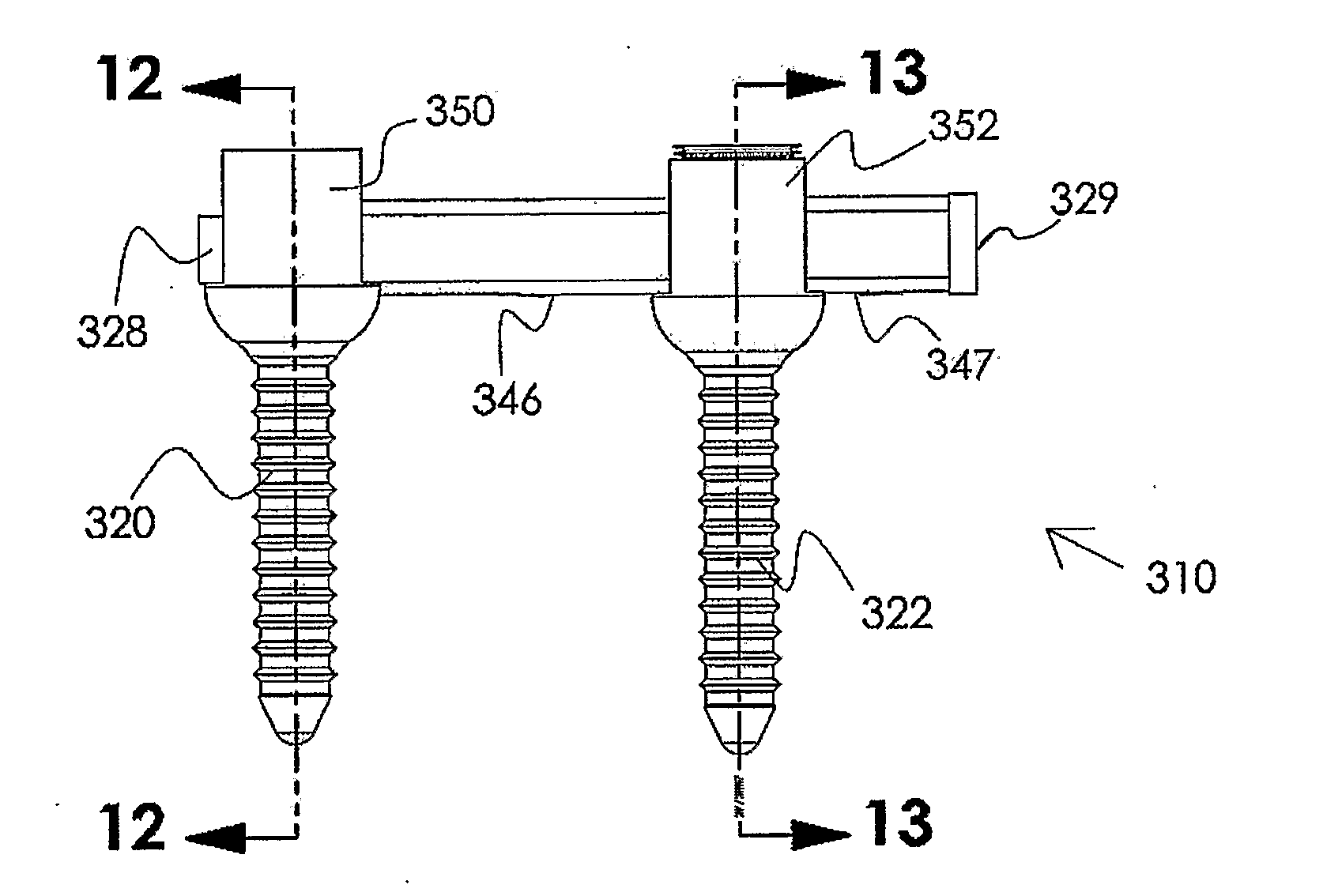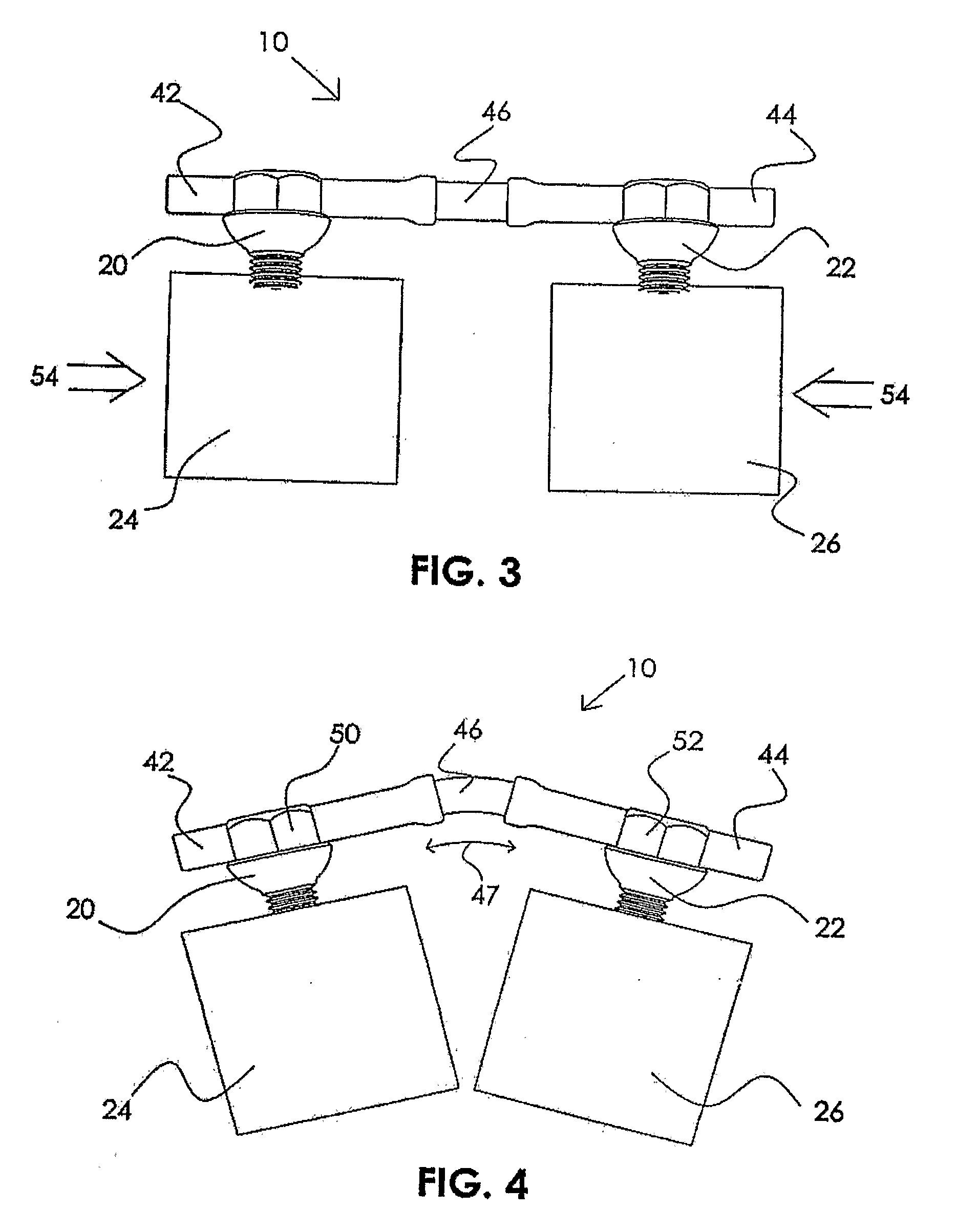Mobile spine stabilization device
a stabilizing device and spine technology, applied in the field of orthopaedic stabilization devices, can solve the problems of not being able to resist compression or shear loads, not being able to minimize the shear force between the vertebral bodies being stabilized, and long recovery process, etc., to achieve controlled flexion and extension motions of the spine, limiting the range of relative motion, and reducing the effect of compression and shear forces
- Summary
- Abstract
- Description
- Claims
- Application Information
AI Technical Summary
Benefits of technology
Problems solved by technology
Method used
Image
Examples
example 1
[0062]A single level spinal construct consisting of a pair of nitinol rods each 76 mm in length and 5.5 mm in diameter and having a martensite / austenite transition temperature of 200 degrees Fahrenheit (95 degrees centigrade) was prepared using DENALI™ spinal screws (available from K2M, LLC, Leesburg, Va., under the designation K2M 40) was tested pursuant to ASTM testing standard F 1717-04 (Spinal Implant Constructs in a Verbrectomy Model). The results are shown in Table 1.
TABLE 1Nominal LoadTestDuring TestNumber(Newtons)CyclesResult1+ / −110 N5,000,000Runout(+ / −5 N variance)2+ / −110 N5,000,000Runout(+ / −5 N variance)
[0063]The results reported in Table 1 show that a 5.5 mm diameter nitinol rod having a martensite / austenite transition temperature of about 200 degrees Fahrenheit (95 degrees centigrade) can withstand 5 million cycles at 110 N load.
PUM
 Login to View More
Login to View More Abstract
Description
Claims
Application Information
 Login to View More
Login to View More - R&D
- Intellectual Property
- Life Sciences
- Materials
- Tech Scout
- Unparalleled Data Quality
- Higher Quality Content
- 60% Fewer Hallucinations
Browse by: Latest US Patents, China's latest patents, Technical Efficacy Thesaurus, Application Domain, Technology Topic, Popular Technical Reports.
© 2025 PatSnap. All rights reserved.Legal|Privacy policy|Modern Slavery Act Transparency Statement|Sitemap|About US| Contact US: help@patsnap.com



